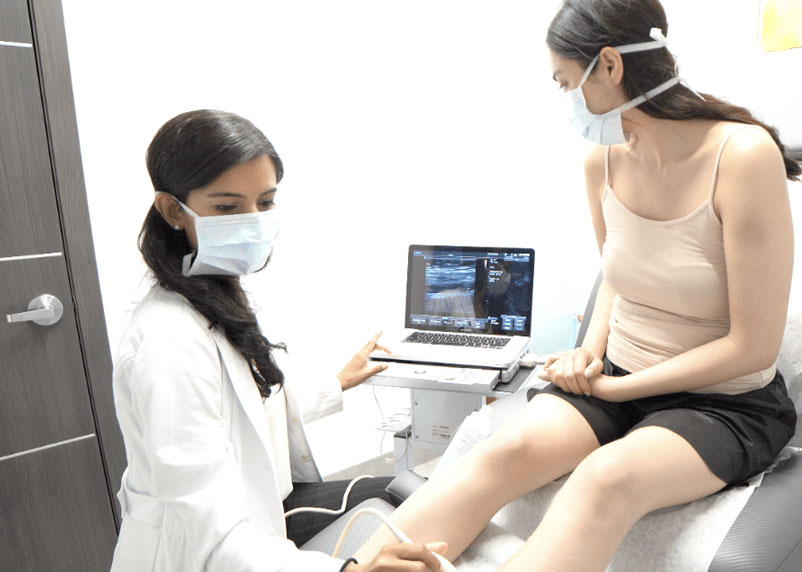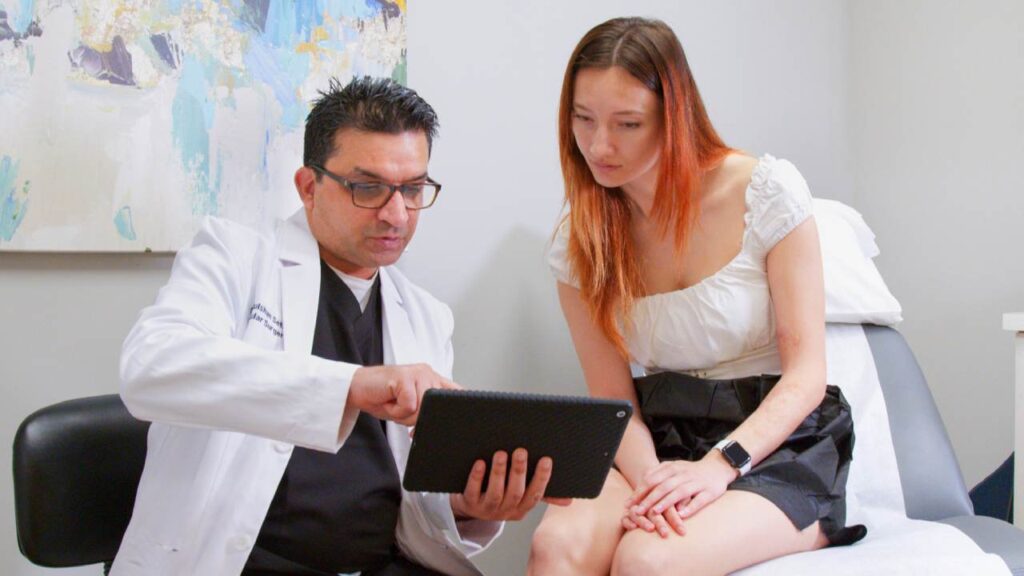Choose an Accredited Vein Treatment Clinic in NYC
The most exceptional vein clinics in New York City are accredited by the Intersocietal Accreditation Committee. Few clinics attempt to earn this distinction, and even fewer receive it, because it involves a rigorous review of the doctors’ training, treatment devices, and patients’ success rates. The facilities that receive that gold standard of approval are in a different tier than other vein treatment clinics. Book an appointment at one of our accredited vein clinics in New York City for unparalleled care. Our locations in the Financial District and Midtown Manhattan, near Grand Central Terminal, make it easy to get spider or varicose vein treatment when you’re in the city. We also have offices in Hartsdale, Brooklyn, Jericho, Port Jefferson, and West Islip.

Choose a State of the Art Vein Clinic in New York City
It’s important to choose a state of the art vein clinic in New York City so you get the most current treatment options. Vein medicine has changed significantly in recent decades, and you deserve the latest technology. Our award-winning vein clinics have been named Centers of Excellence for cutting-edge procedures, and we’re a Medtronic Training Site. Outdated vein treatments involve more risks, complications, expenses, and recovery time. They are also less precise and effective compared to newer, ultrasound-guided procedures. Before visiting a vein clinic, ask whether they offer procedures like mechanochemical ablation and radiofrequency ablation, in addition to their surface or surgical treatments.
Choose Board Certified NYC Vein Specialists
Some specialists who treat veins aren’t doctors. Those who are doctors might not be board certified in a vascular field. It’s important to choose a board certified vein specialist if you want the best outcome. These physicians have studied the vascular system, vein diseases, vein medicine, and vein treatments in depth. Look for a doctor who’s certified by the American Board of Venous and Lymphatic Medicine. Or choose a doctor who’s certified by the American Board of Medical Specialties in a category like vascular surgery or diagnostic radiology. Our team of New York City vein doctors is not only board certified, but they all hold multiple certifications.
Choose Doctors Who Treat Both Varicose and Spider Veins
If a vein specialist only treats spider veins, that means they probably aren’t a vein doctor. Some estheticians and dermatologists offer surface treatments, including topical lasers and sclerotherapy. But these surface procedures don’t treat varicose veins or large spider veins or the cause of most of these veins. Damage in leg veins, in particular, often indicates Chronic Venous Insufficiency (CVI). This vein condition involves valves that don’t close properly, which allows blood to flow in reverse through the vein. That causes pressure to build in the blood vessel, which creates bulging varicose veins and clusters of spider veins.
Always choose a vein doctor who treats both varicose veins and spider veins, because that usually means they can identify and treat the cause. If you ignore CVI, more vein damage is likely to develop. Our vein specialists treat both CVI and the visible vein damage with quick, minimally invasive procedures. It only takes a few minutes to treat CVI, but it requires specific training and technology that cosmetic vein clinics don’t possess. Most patients do not need a vascular surgeon, as you’ll learn more about below.
Choose Vein Doctors Who Use Minimally Invasive Procedures
Minimally invasive procedures are the best method for most spider and varicose vein treatments. Surgery was once a common solution, but it involves risks of bleeding, anesthesia complications, infections, and scarring. It also requires more recovery time, and it can be a painful process. New technology has largely replaced traditional vein stripping surgery. Instead of the old process of making several incisions, hooking the vein, and pulling it out of the body, vein doctors can now close veins within the body.
They use tiny needles or catheters to deliver medications, adhesives, or thermal energy right to the vein’s walls. These tactics seal faulty veins and valves shut so blood can flow into functional veins nearby. Minimally invasive treatments take an average of 15 to 30 minutes. They don’t require any recovery time or prep before the appointment. Many patients even complete treatment during their workday. If you want gentle, affordable, safe, effective, and rapid vein care, choose a doctor who performs minimally invasive vein treatments. Only choose a vascular surgeon if they’re also trained in less invasive measures.
Choose a Clinic With Minimally Invasive Treatment Options
Don’t just look for a doctor who offers one minimally invasive alternative to surgery or surface treatments. There’s no single method that’s best for everyone. So, you need a NYC vein clinic with several minimally invasive treatment options. The best vein doctors discuss every possible method with their patients and involve them in the decision. Everyone has different vasculature, medical histories, and preferences. Our vein specialists even combine methods if needed for beautiful results. Here are some of the modalities we recommend. Schedule your consultation today to discuss options for your vein condition.
- Sclerotherapy– This treatment injects a sclerosant into the vein which irritates the venous walls. That creates scar tissue that makes the vein impassable for blood. The vein then fades from sight and is removed from the circulation process. Sclerotherapy doesn’t require any anesthesia, and it’s one of the quickest and easiest ways to treat veins. It is delivered in a liquid, foam, or pre-mixed foam concentration, depending on the size of the vein. Common brand names for sclerotherapy include Asclera and Varithena.
- Mechanochemical Ablation– This procedure is an advanced form of sclerotherapy with a specialty rotating catheter. The vein doctor injects the sclerosant and also rotates the device to disrupt the venous walls. The dual approach is effective for larger or more complicated veins. It doesn’t utilize anesthesia, so it’s a quick treatment as well. Vein doctors might use ultrasound guidance to position the catheter precisely. ClariVein is a common name for mechanochemical ablation.
- Vein Adhesives– Like sclerotherapy, this treatment is a quick injection. Instead of a sclerosant, doctors insert cyanoacrylate glue into the vein. This seals it shut so that it’s removed from circulation and invisible. There is no anesthesia with this treatment, and you can walk around right away. VenaSeal is one of the most common brands for this treatment.
- Radiofrequency Ablation– With this technique, doctors inject tumescent anesthesia around the vein to protect the adjacent area from heat. Then they position a tiny needle on the vein and activate it with radiofrequency to heat the blood vessel. This ablates the vein, sending blood into other veins nearby. ClosureFast is a common brand used for this procedure.






